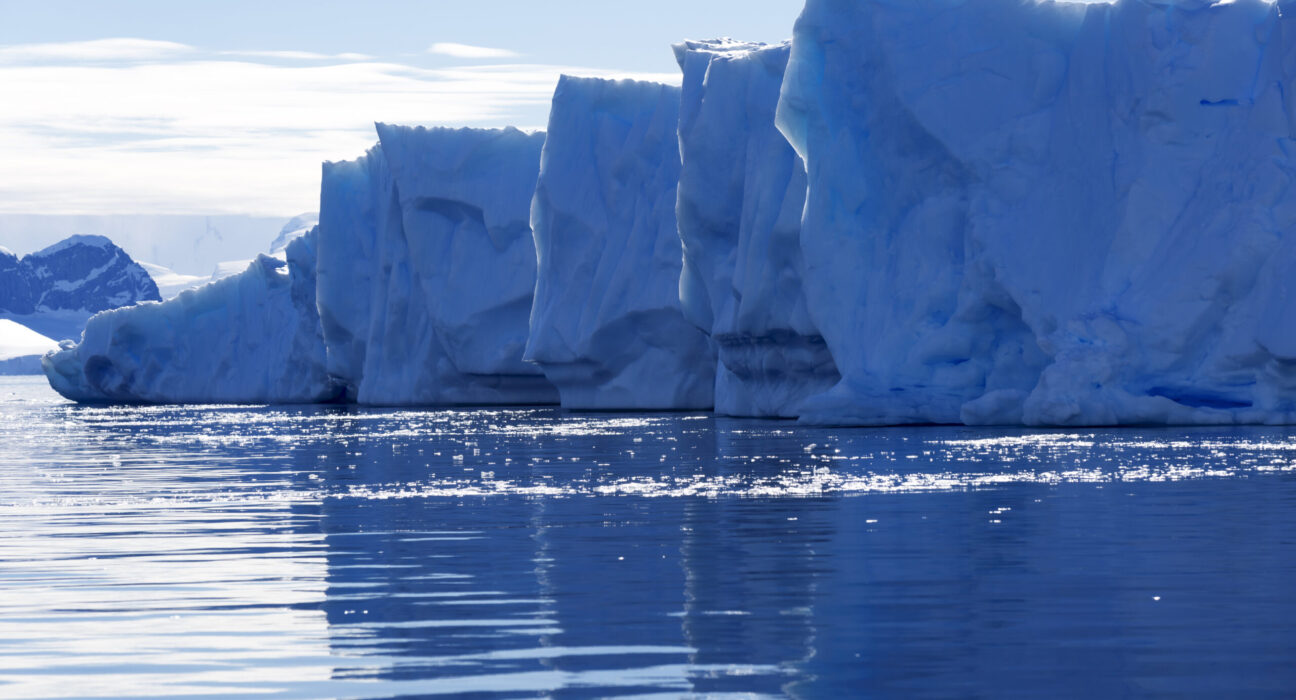- Increase in carbon dioxide, methane, and other greenhouse gases has caused the earth’s temperature to rise
- Spike in global temperatures has fueled climate disasters
- India is currently the third largest emitter of greenhouse gases and accounts for only 3% of historical emissions
- India will take its non-fossil energy capacity to 500 GW by 2030
- It is imperative to develop internal UDA capacities and capabilities that helps in sustaining life underwater and mitigate events caused due to climate change.
Heading
When was the last time you experienced winter chills from the month of November? I do not remember getting dressed in winter attire before it was mid-December while living in the national capital city of India, in the past few years. This simple example is a shred of evidence enough to prove that climate change has done enough harm to our environment and has contributed immensely to the extreme weather events that we are witnessing across the globe. Human activities have caused rapid changes to our global climate that are contributing to extreme weather conditions.
When fossil fuels are burned to generate electricity, heat, and transportation, carbon dioxide, a greenhouse gas that traps solar radiation, is released into our atmosphere. A massive increase in carbon dioxide, methane, and other greenhouse gases has caused the earth’s temperature to rise. The spike in global temperatures has fueled climate disasters that, as per the experts, will only get worse unless we act against them. Some experts have presented a caveat stating that we are running out of time to cut pollution to avoid climate catastrophe drastically.
Which nations have contributed the most?
In the climate change framework, the responsibility falls on those countries that have contributed most of the greenhouse gas emissions since 1850, generally considered to be the beginning of the industrial age. Countries and regions including the United States, the European Union, and the UK account for over 50% of all emissions during this time. If countries like Russia, Canada, Japan, and Australia are included, the combined contributions go beyond 65%, which accounts for almost two-thirds of all emissions. Historical responsibility is a significant parameter to assess who contributed the most because carbon dioxide remains in the atmosphere for hundreds of years. As per the experts, it is the cumulative accumulation of this carbon dioxide that causes global warming.
If we talk about India, it is currently the third largest emitter and accounts for only 3% of historical emissions. While China, which is the world’s biggest emitter for over 15 years now, has contributed about 11% to the total emissions since 1850.
Extreme weather events in India and how is India coping?
India has been witnessing extreme weather patterns in 2022 and the year is almost on the verge of completion. There are heatwaves somewhere and floods in other parts of the country. After suffering intense heatwaves in April, states like Assam, Nagaland, and Bihar received too much rainfall and on the other hand, Jharkhand received almost half of what was due for it. In 2021, some scientists from the Ministry of Earth Sciences revealed a sharp rise in extreme weather events in India in the past 50 years (1970 to 2019).
A paper was published in ScienceDirect journal on February 26, 2021, which compared extreme weather events across two 20-year periods—1980-1999 and 2000-2019. The comparison highlighted an increase of 138% in heatwaves, 193% in lightning strikes, 25% in cold waves, 28% in floods, and a decrease of 19% in tropical cyclones. According to the paper, extreme weather events resulted in a mortality rate of 3.86 between 1980 and 1999 (mortalities per year per million population), which reduced to 2.14 between 2000 and 2019. This is due to better disaster management and more accurate weather forecasts, the paper added. But within this, mortality from heat waves and lightning strikes is on the rise. Mortality due to extreme weather events was maximum in the decade 1970-1979 (87.5% of these mortalities were due to floods and tropical cyclones) followed by 1990-1999. These were the decades of the three most destructive tropical cyclones—the Odisha Cyclone in 1971, the Andhra Pradesh Cyclone in 1977, and the Odisha Super Cyclone in 1999.
Human-induced warming reached approximately 1°C (likely between 0.8°C and 1.2°C) above pre-industrial levels in 2017, increasing at 0.2°C (likely between 0.1°C and 0.3°C) per decade (high confidence). Warming greater than the global average has already been experienced in many regions, with higher average warming over land than over the ocean.
At the previous year’s Conference of Parties (COP- 26) summit which was held in Glasgow, Prime Minister Narendra Modi set a 5-point agenda for India which would try to keep it on the path of maintaining decorum when it comes to handling climate change. The 5-points have been mentioned below:
- First- India will take its non-fossil energy capacity to 500 GW by 2030.
- Second- India will meet 50 percent of its energy requirements from renewable energy by 2030.
- Third- India will reduce the total projected carbon emissions by one billion tones from now till 2030.
- Fourth- By 2030, India will reduce the carbon intensity of its economy by less than 45 percent.
- And fifth- by the year 2070, India will achieve the target of Net Zero.
Instances of extreme weather events in other countries
I am unaware of any country which has not yet been impacted by the havoc of extreme weather conditions caused due to climate change and other factors. United Kingdoms, for instance, crushed its own record for the highest temperature as a scorching heat wave broiled much of mainland Europe. It experienced its worst drought this year in 70 years and the country had to face issues such as water scarcity and prolonged drought. Spain’s problems began with the arrival in the spring of the earliest heat wave in two decades. Temperatures as high as that normally recorded rose above 40 C (104 F) in many Spanish cities.
In the first week of July 2022, the Portugal government declared an eight-day state of alert due to the heightened risk of wildfires, with the drought-stricken country preparing for temperatures as high as 43°C. In Australia, several deaths were recorded and thousands of people were told to evacuate their homes amid torrential rain and flash flooding in Australia’s largest city, Sydney. The area was hit by flash flooding in March, killing 20 people. Sydney’s main dam had also started to spill overnight — a further concern for the authorities.
Other countries like China, Turkey, and France had to face similar incidents due to extreme weather turmoil in various parts of their territory. The heaviest rains in the decade had caused floods and landslides in Southern China, forcing the evacuation of hundreds and thousands of people. State media photos showed flooded homes, people attempting to clear muddy landslides with spades, and erecting flood defences with sandbags. Parts of France had hit 40C earlier in mid-June, 2022. Scientists said that periods of intense heat are becoming more frequent and longer lasting as a result of global warming.
How are international institutions trying to cope with extreme weather adversities?
The Conference of Parties (COP) group has recognized the importance of the best available science for effective climate actions and policy making.
The countries have expressed alarm and utmost concern that human activities have caused around 1.1 °C of global warming to date and that impacts are already being felt in every region. They have emphasized the urgency of scaling up action and support, including finance, capacity building, and technology transfer, to enhance adaptive capacity, strengthen resilience and reduce vulnerability to climate change in line with the best available science, considering the priorities and needs of developing country Parties.
They have reaffirmed the long-term global goal to hold the increase in the global average temperature to well below 2 °C above pre-industrial levels and to pursue efforts to limit the temperature increase to 1.5 °C above pre-industrial levels, recognizing that this would significantly reduce the risks and impacts of climate change.
The developing nations, including India, have urged developed country Parties to scale up their provision of climate finance, technology transfer, and capacity-building urgently and significantly for adaptation to respond to the needs of developing country Parties as part of a global effort. They have invited Parties to consider further action to reduce, by 2030, non-carbon dioxide greenhouse gas emissions, including methane.
How can Underwater Domain Awareness (UDA) Framework help mitigate climate change?
The events caused due to climate change are not only impacting what you see on land but they also impact lives that remain underwater, in deep seas, rivers and oceans. The developments underwater have also contributed immensely towards causing extreme events in deep oceans. Thus, there is a requirement of climate change studies which can be undertaken as part of UDA Framework.
India has been expanding its footprint in the maritime domain with initiatives such as Sagarmala and Security and Growth for All in the Region (SAGAR) and the national Maritime Agenda – 2020.
In addition, the government should create an enabling environment and encourage interaction between the various stakeholders for the development of a comprehensive UDA framework and create a sustainable maritime model. “The UDA framework transcends the security discourse and integrates all key stakeholders including the security apparatus, blue economic entities, environmental regulators and disaster management authorities, and science and technology providers) to facilitate pooling of resources and synergizing efforts for ensuring safe, secure, sustainable growth for all in the region,” said Dr (Cdr) Arnab Das (Founder and Director of MRC) during one his keynote addresses at ORF, Mumbai.
Concluding remarks
After mentioning so many instances of extreme weather events in this article above, I am pretty sure that the climate crisis is going to loom until and unless we take collective action. However, there is still hope to control climate change.

Nishtha Vishwakarma
About Author
Nishtha works in the communications and advocacy team of the Maritime Research Centre (MRC), Pune, and is also the Editor of the UDA Digest e-magazine. She is an experienced Communications professional with a demonstrated history of working in the public policy and advocacy domain. She completed her post-graduation in Public Relations and Corporate Communications at XIC, St. Xavier’s College, Mumbai. She also works as a Media Researcher at a renowned media institution.


